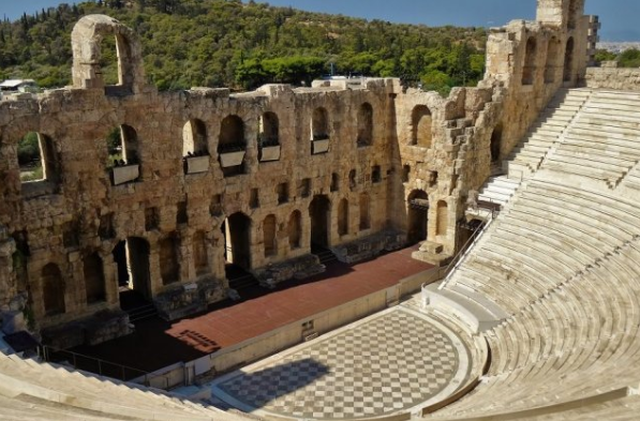The Odeon of Herodes Atticus, an ancient symbol of art near the Acropolis, is temporarily closed
The Odeon of Herodes Atticus, an ancient symbol of art, is temporarily closed
One of the most famous monuments of Greek antiquity, the Odeon of Herodes Atticus, will close after the end of this year’s artistic season for a restoration project that will last about three years.
The news was made public by the Greek Ministry of Culture, which announced that from mid-October the stone theater, built on the southwestern slope of the Acropolis, will no longer be accessible to the public.
The last performance on this iconic stage will be held on October 16, starring the renowned Greek composer Evanthia Reboutsika and a symphony orchestra from Istanbul, specialized in the interpretation of film music and classical works.
The nearly 1,900-year-old structure will undergo extensive interventions to repair damage caused by time, humidity and early restorations, which have affected its stability. The effects of microorganisms on the ancient stones are among the most worrying problems that experts will address.
The works will include strengthening the walls, modernizing the backstage areas, and reviewing structural elements, all under the direction of a team of specialists from the National Technical University of Athens.
The Odeon, built around 160 AD by Herodes Atticus in honor of his late wife, Regilla, has been the main stage of the Athens Festival since 1955, hosting some of the world’s most famous artists – from Maria Callas and Frank Sinatra, to Luciano Pavarotti, Sting and the Foo Fighters.
The theater is scheduled to reopen in 2028.
But the Odeon is not the only monument to be closed this October. The Corinth Canal, another historic work connecting the Peloponnese Peninsula with mainland Greece, will also temporarily suspend shipping from October 14 to allow for the final phase of the restoration of the embankment.
The canal, 6.3 kilometers long and opened about 140 years ago, serves as an important maritime roundabout and tourist attraction, significantly shortening the distance between the Adriatic and Ionian Seas, although it is only used by ships with a width of less than 17 meters.
The desire to cross the narrow Isthmus of Corinth dates back to antiquity. At that time, ships were transported over a stone road, called “Diolkos”, where they moved by carts along a path of about 6 kilometers that connected the Gulf of Corinth with the Saronic Gulf.
